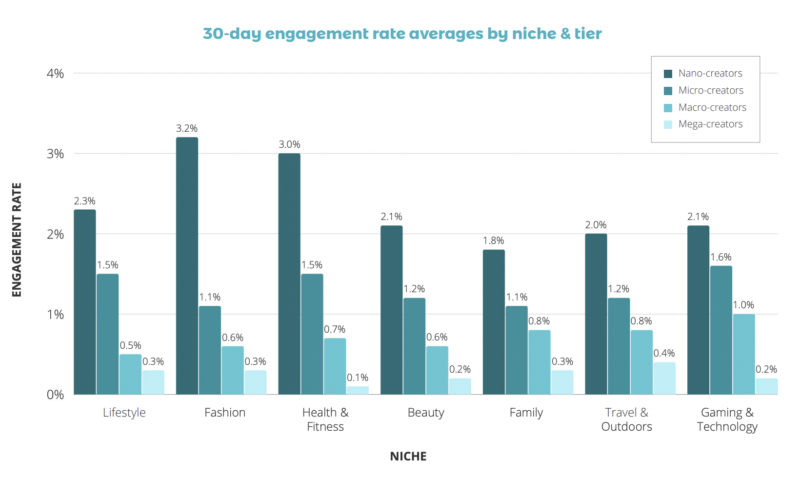Collaborations on YouTube have taken the world by storm in recent years.
With more than 2 billion active monthly users, YouTube is actually the second largest search engine in the world! It’s no wonder brands want to take advantage of the channel.
Developing long lasting relationships with brands on YouTube can be a huge boost to your career as a creator. But collaborating with them successfully can be a tricky process.
So how do you collaborate with brands in an authentic way? And how do you figure out if the brand is even a good fit for you? You certainly don’t want to risk damaging your credibility!
That’s where this article can help.
We’ll be covering 6 tips to follow in YouTube collaborations, so you’ll be set up for success! You’ll also find a great example of a past collaboration.
Table of Contents
Be professional
If a brand wants to collaborate with you, they’ll reach out. This is your opportunity to make a great first impression! You can do this in a number of ways:
- Reply to any messages or emails in a timely manner. By getting back to brands in good time, they’ll see you as professional and organized. You’ll also save them time from needing to follow up with you. Many creators drop the ball on this, which can negatively impact their credibility. So, be sure to be on top of your communications.
- Be transparent. Throughout the collaboration, you should keep brands up to date with your progress. By being proactive, you’re showing you value their time by making sure they don’t have to check in again and again. The same goes for any changes or delays to the project. This way, the brand can work with you to find a solution if any unexpected circumstances come up, and they’ll be able to adjust their own deadlines.
Review the brief
Once you’ve agreed to the collaboration, you’ll receive a brief covering any guidelines and expectations the brand has. Make sure you give it a good read and pay close attention to what they ask of you.
You should also take note of the brand’s collaboration goals. You’ll need to optimize for it in your content. For example, if the goal is conversions, you should be strongly encouraging your audience to click on a link to the brand’s website.
If the goal is to create high quality content, you should concentrate your efforts on producing the best content possible. That might include getting interesting shots and making sure the video quality is the best.
Pay close attention to small details in the brief like mentioning a discount code in your videos or including it in the description.
Now is also a good time to ask any questions you may have. Be sure to clarify anything you don’t understand to ensure you get things right the first time.
This will minimize the chances of you needing to go back and make changes, which will take extra time and effort. It’ll also cause more delays in the collaboration, so you risk damaging your relationship with the brand. The last thing you want is to put loads of work into a video that doesn’t hit the mark.
By asking questions now, you’ll be clearer about what the brand wants from you. And the brand will feel confident that you understand everything properly.
It’s also a good idea to show brands some flexibility in collaborations. It’s possible the brand’s goals may change slightly, so being able to switch gears can really make a difference.
Decide if the brand is a good fit
When brands look for creators to work with, they try to find ones who are credible, relevant, and have the right target audience.
This helps them promote their brand or product in an authentic and genuine way, which is one of the core benefits of influencer marketing!
As you’ve already received a collaboration request, it’s safe to say the brand likes what you do. But it’s important to figure out if the brand is the right fit for you too. Here’s a few questions you can ask yourself when trying to decide.
Can you collaborate authentically?
Authenticity is a major part of being a successful creator. Your audience follows you because of your personality, content, and unique style.
Your followers will know when you collaborate with brands that don’t align with your values or interests. This can damage your credibility, which you’ll want to avoid at all costs.
Before saying yes to a collaboration, take a look at the brand’s social media channels and company website to make sure you share similar values and aesthetic. By doing your research, you’ll be able to tell if the brand is a good match for you.
If you’re not the biggest fan of the brand and what they have to offer, it might be best to walk away. If you do decide to decline though, make sure you always do so in a polite and friendly way.
Is the brand relevant to your audience?
It’s also important to consider whether the brand is relevant to your audience. One of the reasons your audience follows you is because they’re interested in your niche. And sharing irrelevant content can look out of place.
For example, let’s say you’ve built a following on YouTube reviewing PC gaming equipment. Collaborating with a brand that makes high-end PCs for gaming would be a great fit! Your followers will be interested in what you have to say because it’s relevant to them. This means the collaboration will look sincere and relevant.
On the other hand, if you collaborate with a clothing company that makes raincoats, your followers may get confused or worse yet, annoyed. So make sure the brand and their products are relevant to your audience.
Create engaging, personal content
Creators are great storytellers. So when a brand works with you, they want you to promote them in a personal and authentic way.
The great thing about YouTube is that there’s a lot of creative freedom in long form videos. This gives you more time to tell your story compared to channels like Instagram or Twitter. Take that opportunity to share your thoughts, experiences, and honest opinions during the collaboration.
In our experience, the best collaborations are the ones that are personal. You can do this by giving real life examples of how you use a product or explaining how you see it fitting into your life.
For example, say you’re reviewing a cooking appliance. Telling a story about how you’ve used it to make a recipe that’s been in your family for generations would be great!
Learn more about how to create stellar content for your collaborations.
Provide added value
Before hitting publish on your video, check if there are other ways to add more value to the collaboration. You’ll leave a really great impression on the brand, and which will help you build long lasting relationships with them!
There are several ways to do this.
You can review the details of the brief again. If there are specific talking points to cover, you can always mention them more often.
Also, you could share the video on your other social channels for extra exposure, even if that hasn’t been asked of you.
Of course, make sure you don’t go overboard and come across as pushy or inauthentic to your followers. The key here is delivering more than the brand expects to impress them.
Know what results matter
When collaborating on YouTube, you’ll be expected to share your results with the brand. You’ll typically be asked to share them 30 days after you publish your video. If you use a platform like inzpire.me, these results are automatically submitted.
It’s good to know if your results meet the brand’s expectations. You can check this by comparing your results with our 30-day benchmarks below.


Here’s how to use these benchmarks in practice.
Let’s say you’re a Fashion creator. You have a YouTube channel with 200,000 subscribers. In your collaboration, your video received 35,000 in the first 30 days. You’d work out your 30-day view rate with the following formula:

This gives you an average view rate of 17.5%.
If you take a look at the 30-day benchmark graph above for the fashion niche, macro-creators have an average view rate of 14%. This means your video performed very well, which increases your chances of getting booked again!
Working out your 30-day engagement rate is a similar process. If you have 200,000 subscribers, your videos should be getting around 1,200 engagements.
An example of a great collaboration
So, you’ve learned some great tips for collaborating on YouTube! Now let’s take a look at what these best practices look like in a real campaign.
Skillshare is a learning platform where people can take online classes to learn new skills. They’re a company that’s invested heavily in YouTube influencer marketing, spending over $1 million on influencer marketing at the start of 2020.
They’ve worked with content creators like Mike Boyd, a YouTuber with over 2.8 million subscribers who documents his journey learning new skills.
This collaboration works really well for a couple of reasons:
Boyd is able to feature Skillshare in an authentic way. In his video, he mentions he often gets asked how he learns new things quickly. This is the perfect introduction to the product, and it’s valuable to his audience.
To give it that personal touch, he also mentions that he has his own course on Skillshare and encourages his viewers to check it out. This supports Boyd’s credibility as he’s personally invested time and effort into Skillshare.
To help promote this collaboration, a custom landing page has been set up where viewers can sign up for 2 free months of Skillshare. A link to this page is featured in the description of Boyd’s videos.

Final thoughts
There you have our tips for succeeding in YouTube collaborations.
Collaborating on YouTube is a great way to grow your own brand and develop long lasting relationships as a creator. Be sure to follow these tips to take your collaborations on YouTube to the next level!
If you’re struggling to get collaborations, be sure to check out our blog post about how to get sponsored on YouTube.










